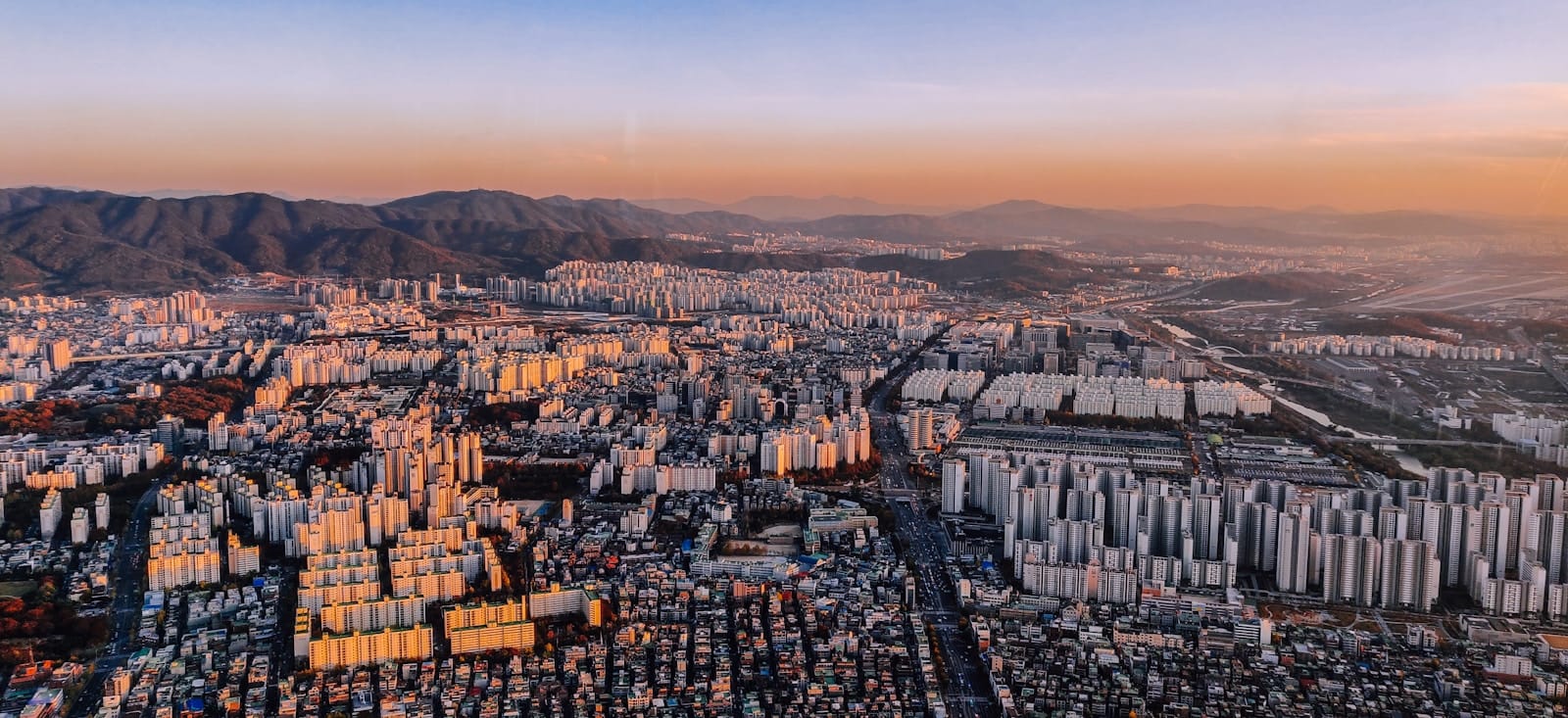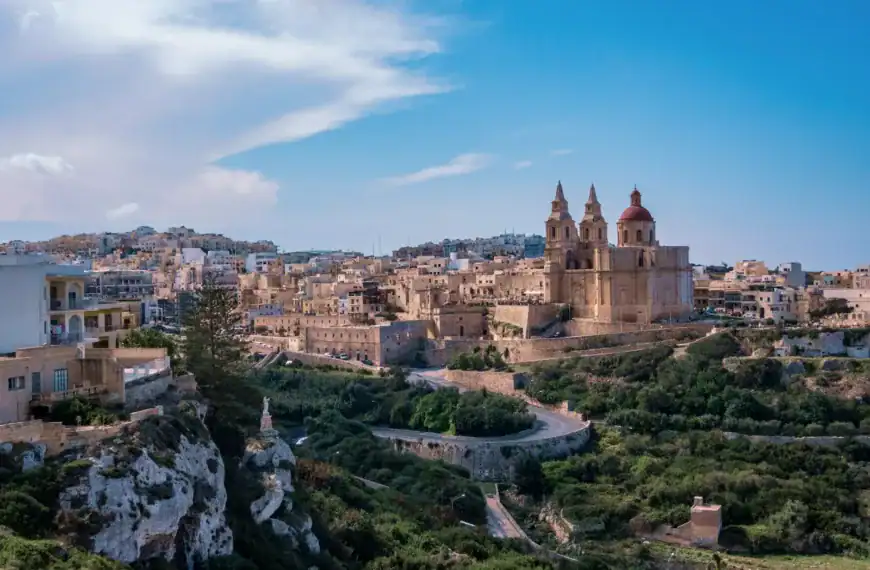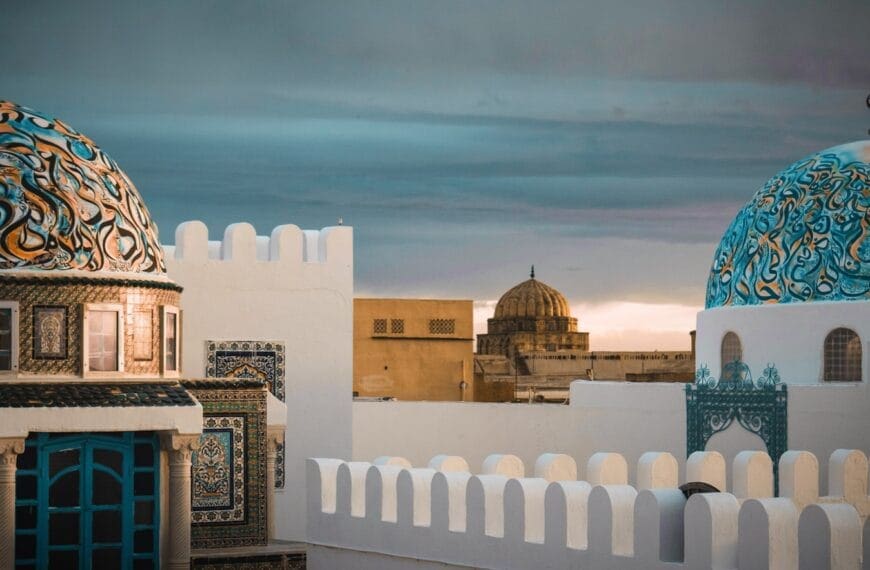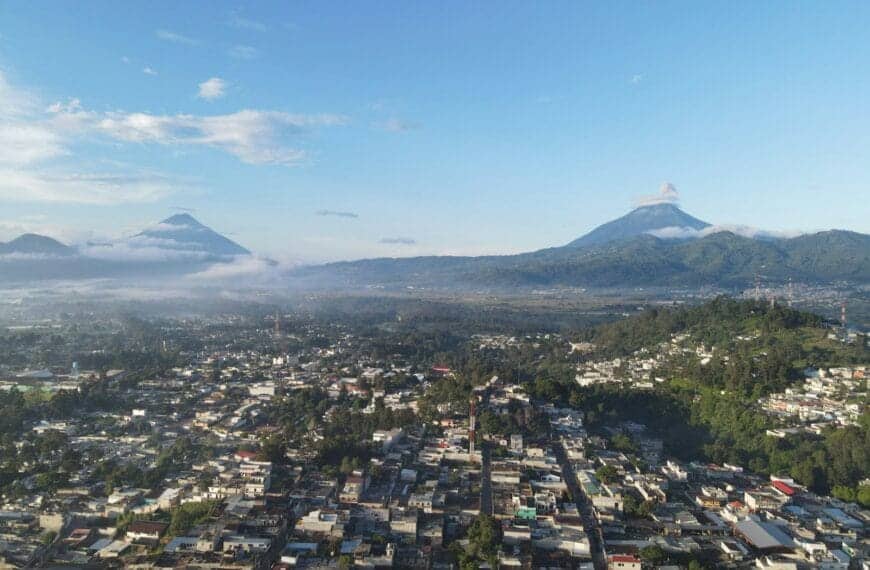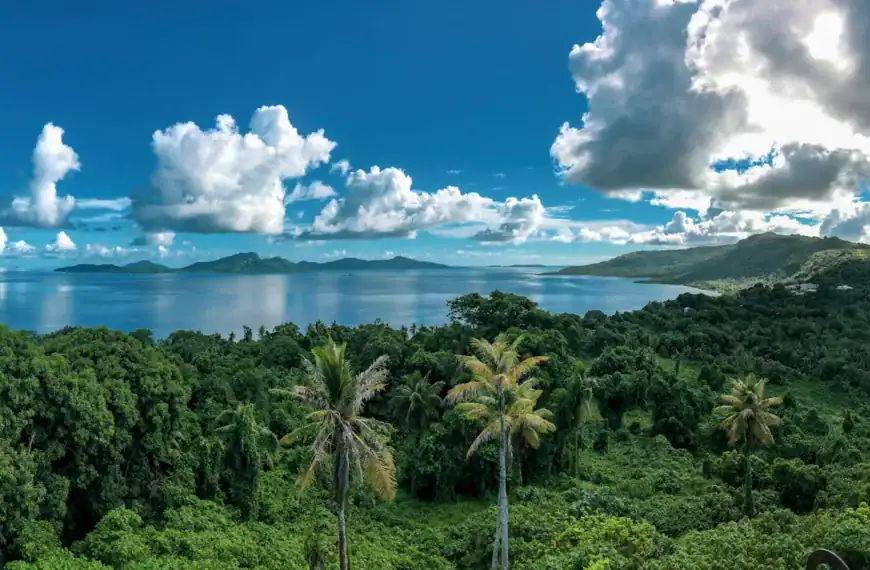South Korea Travel Guide: Timeless Traditions & Futuristic Energy
Intro to South Korea Travel Guide
Few countries balance ancient tradition with cutting-edge innovation as seamlessly as South Korea. From the neon skylines of Seoul and Busan to the tranquil temples of Gyeongju and the tea fields of Boseong, the country offers a dazzling variety of experiences. Whether you’re drawn to K-pop culture, mountain hiking, Buddhist heritage, or island beaches, South Korea delivers journeys both exhilarating and serene. This South Korea travel guide will help you explore the nation’s vibrant cities, natural escapes, and cultural wonders.
For a seamless trip, browse top-rated South Korea tours and curated activities that highlight the best things to do across the country. We may earn a commission if you book through our links — at no extra cost to you.
Travel Destinations in South Korea
Chungcheongbuk-do | Chungcheongnam-do | Gangwon-do | Gyeonggi-do | Gyeongsangbuk-do | Gyeongsangnam-do | Jeju-do | Jeollabuk-do | Jeollanam-do | Seoul | Ulsan
💡Quick Facts:
Destination: Republic of Korea (South Korea), East Asia
Area: 100,210 km² / 38,690 mi²
Population: ~51.7 million (2025 est.) — Statistics Korea
Capital: Seoul
Regions: Seoul Capital Area, Gangwon, Chungcheong, Jeolla, Gyeongsang, Jeju
Languages: Korean (ISO: ko); English widely taught
Currency: South Korean Won (KRW, ISO 4217)
Time Zone: KST (UTC+9)
Major Airports: Incheon (ICN), Gimpo (GMP), Gimhae/Busan (PUS), Jeju (CJU)
Climate: Temperate, four seasons; humid summers, cold winters
Known For: K-pop, DMZ, palaces, Jeju UNESCO site, cuisine
Major Religions: Buddhism, Christianity, Confucian traditions, non-religious majority
🛂Arrival Info:
Entry Requirements: Many nationalities visa-free 30–90 days. Some require K-ETA (Korea Electronic Travel Authorization). — K-ETA Portal
Immigration Authority: Korea Immigration Service
Borders: Only air/sea access; no open land border (DMZ sealed).
Customs Restrictions: Limits on alcohol, tobacco, currency import; medication and drones restricted.
🏥Health Info:
Vaccines: Routine vaccines; Hepatitis A/B, Japanese encephalitis for long stays.
Risks: Fine dust (spring), seasonal flu; no malaria risk.
Tap Water: Safe in cities.
Medical Care: Modern hospitals in Seoul/Busan; English-speaking services available.
🚑 Check travel insurance options for travel emergencies, delays, and medical needs abroad — Get coverage here
💉 Stay Informed with Official Updates: WHO – International Travel & Health | CDC – Travel health updates
🚨Travel Advisory:
Overall Safety: Low violent crime; safe urban environment.
Crime: Rare but petty theft possible in markets and nightlife districts.
Scams: Overcharging taxis, unofficial tour guides.
Weather Hazards: Typhoon risk July–Sept; cold winters.
Political Risks: Peaceful protests in Seoul; DMZ remains militarized.
🌍Track Real-Time Official Updates: US Travel Advisory | UK Foreign Travel Advice | Government of Canada | NZ SafeTravel
🥳Holidays:
Seollal (Lunar New Year) – Jan/Feb, closures nationwide
Independence Movement Day – Mar 1
Buddha’s Birthday – Apr/May
Chuseok (Harvest Festival) – Sep/Oct, heavy domestic travel
National Foundation Day – Oct 3
Christmas Day – Dec 25
Full calendar: Gov’t of Korea
💰Visitor Info:
Payments: Credit/debit widely accepted; cash for small shops.
Tipping: Not customary; service included.
Costs (avg/day): Budget $40–60; Mid $90–150; Luxury $250+.
Duty-Free: Allowances listed at Korea Customs Service
Tourist Tax: None nationwide; hotel service charges standard.
🛫Airports:
Incheon International Airport (ICN): Major global hub near Seoul
Gimpo Airport (GMP): Seoul’s domestic and regional airport
Gimhae (PUS), Jeju (CJU), Daegu (TAE): Regional gateways
Express rail/buses connect airports to major cities.
🧳 Delayed or canceled flight? Check if you’re eligible for compensation
🚍Transport:
Urban Transit: Extensive subways in Seoul/Busan; buses reliable.
Intercity: KTX high-speed rail (Seoul–Busan in ~2.5 hrs).
Driving: Right-hand traffic; IDP required for rentals.
Ride-Hailing: Kakao T common; Uber limited.
Authority: Ministry of Land, Infrastructure and Transport
🚗 Book reliable airport transfers and in-city rides in advance. Reserve your ride here
🛰️Connectivity:
SIM/eSIM: Available at airports.
Carriers: SK Telecom, KT, LG U+
Power: 220V, 60Hz, plugs type C/F.
Wi-Fi: Public hotspots common; strong nationwide coverage.
🛜 Stay connected abroad with affordable eSIM data packs. Get your eSIM here
📜Laws & Etiquette:
Drinking Age: 19; public drinking legal.
Smoking: Restricted in public places.
Drugs: Strict penalties; even small possession is criminal. — Prosecution Service
Etiquette: Remove shoes in homes; bow when greeting.
Drones: Regulated — MOLIT Drone Info
👮Emergency Info:
Emergency Numbers: 112 police, 119 fire/ambulance
Tourist Hotline: 1330 (multilingual, 24/7)
Tourism Authority: Visit Korea
🗺️US/UK Embassies Abroad: US Embassies | UK Embassies
🏛️ Embassy locator tools: Embassies Worldwide
🌞Weather:
Spring (Mar–May): 7–20°C / 45–68°F; cherry blossoms
Summer (Jun–Aug): 22–30°C / 72–86°F; humid, monsoon
Autumn (Sep–Nov): 10–22°C / 50–72°F; foliage
Winter (Dec–Feb): −6–5°C / 21–41°F; snowfall in mountains
Typhoon Risk: Jul–Sep
Source: Korea Meteorological Administration
🌦️ Stay prepared—check the weather forecast for your destination — Weather Forecast
South Korea by Region
Seoul & Gyeonggi Province
The beating heart of South Korea, Seoul blends skyscrapers with historic palaces and vibrant neighborhoods. Surrounding Gyeonggi Province offers gateways to mountains, theme parks, and folk villages.
- Seoul: Explore Gyeongbokgung Palace at dawn, join a street food crawl in Myeongdong, and hike up Namsan Tower for panoramic views. The city is also home to world-class shopping in Gangnam and cultural gems like Bukchon Hanok Village.
- Suwon: Known for UNESCO-listed Hwaseong Fortress, Suwon preserves Joseon-era military architecture. It’s also famous for crispy Suwon galbi (beef ribs).
- Incheon: Beyond its international airport, Incheon charms with Chinatown, Songdo’s futuristic cityscape, and coastal mudflats ideal for eco-tours.
Gangwon Province
Mountainous and forested, Gangwon is a natural playground that hosted the 2018 Winter Olympics.
- Pyeongchang: Popular for ski resorts in winter and alpine hiking in summer. Don’t miss Daegwallyeong sheep farm for pastoral photo ops.
- Sokcho & Seoraksan National Park: Sokcho is a coastal city known for seafood and as a base for Seoraksan hikes. The park’s granite peaks and autumn foliage are iconic.
- Gangneung: Famed for coffee culture, beaches, and traditional markets.
North & South Gyeongsang
The cultural backbone of Korea, with historic temples and Confucian academies.
- Gyeongju: Nicknamed the “museum without walls,” this ancient Silla capital brims with tumuli, temples, and UNESCO sites like Bulguksa Temple.
- Daegu: Blends modern shopping with herbal medicine markets and is a transport hub for the region.
- Andong: Known for Hahoe Folk Village, traditional mask dances, and soju heritage.
Jeolla Provinces
Laid-back, fertile, and gastronomically rich.
- Jeonju: A culinary capital, birthplace of bibimbap, and home to a large hanok village.
- Boseong: Rolling green tea fields offer scenic walks and tastings.
- Mokpo: A port city with easy access to offshore islands.
Busan & South Gyeongsang
South Korea’s maritime hub balances bustling harbors with relaxed beaches.
- Busan: Haeundae Beach, Jagalchi Fish Market, Gamcheon Culture Village, and the Busan International Film Festival.
- Tongyeong: Often called the “Naples of Korea,” dotted with islets, cable cars, and art festivals.
Jeju Island
A volcanic island paradise with UNESCO recognition.
- Hallasan National Park: South Korea’s highest peak, with hiking trails through volcanic craters.
- Seongsan Ilchulbong (Sunrise Peak): A tuff cone offering breathtaking dawn views.
- Jeju Folk Village: Preserves traditional island life and culture.
Top Places to Visit
Cultural Capitals
- Seoul: Must-see for first-time visitors. Dive into palaces, modern museums, and vibrant nightlife.
- Gyeongju: Ideal for history buffs exploring Korea’s Silla legacy.
Nature Escapes
- Seoraksan National Park: Rugged hikes, cable cars, and dramatic autumn colors.
- Hallasan on Jeju: A trekker’s paradise, accessible yet challenging.
Coastal & Island Retreats
- Busan: A lively mix of beaches, urban energy, and seafood culture.
- Jeju Island: Famous for lava tubes, beaches, and unique island cuisine.
- Andong: Folk heritage and mask dances.
- Boseong: Green tea terraces that feel like a painting come alive.
How to Choose Where to Go
- For Adventure: Head to Gangwon’s ski slopes or Jeju’s Hallasan for hiking.
- For Culture: Gyeongju and Andong immerse you in Korea’s heritage.
- For Beaches & Relaxation: Busan’s coastlines and Jeju’s hidden coves are perfect.
- For Multi-Stop Trips: Pair Seoul with Gyeongju for history, then continue to Busan for the coast.
How to Get Around
Air Travel
Domestic flights connect Seoul to Jeju, Busan, and regional cities. Jeju is South Korea’s busiest route.
Rail
The KTX high-speed rail makes Seoul–Busan in 2.5 hours. Book via Korail; a rail pass helps tourists save.
Bus
Express buses reach every province. Intercity terminals are well-organized, with English signage.
Car Rental
Useful for Jeju or rural trips, but unnecessary in cities. International license required.
Urban Transit
Subways in Seoul, Busan, and Daegu are efficient. T-money cards simplify payment. Apps like KakaoMap and Naver Map help with navigation.
Travel Budget & Costs
- Budget Travelers: $40–60/day using hostels, street food, and public transit.
- Mid-Range: $100–150/day with boutique hotels and intercity rail.
- Luxury: $250+ for upscale hotels, private tours, and gourmet dining.
Tips: Eat at local markets, use passes like Discover Seoul, and book KTX early for discounts.
Best Time to Visit
- Spring (Mar–May): Cherry blossoms, mild weather. Popular in Seoul and Jinhae.
- Summer (Jun–Aug): Hot, humid, monsoon rains. Great for beaches in Busan and Jeju.
- Autumn (Sep–Nov): Best season — crisp skies, colorful foliage in Seoraksan.
- Winter (Dec–Feb): Skiing in Pyeongchang, festive lights in Seoul.
Festivals & Cultural Events
- Jinhae Cherry Blossom Festival (Apr): Millions flock to see blossoms.
- Boryeong Mud Festival (Jul): Playful beach event on Korea’s west coast.
- Andong Mask Dance Festival (Sep–Oct): Traditional performances.
- Busan International Film Festival (Oct): Asia’s most important film showcase.
- Seoul Lantern Festival (Nov): Cheonggyecheon Stream lit with thousands of lanterns.
Must-See Experiences
- Hike up Seoraksan’s Ulsanbawi Rock at dawn.
- Visit Bukchon Hanok Village in Seoul for hanok architecture.
- Relax in Busan’s Haeundae Beach spas.
- Wander through Jeonju Hanok Village and taste authentic bibimbap.
- Explore Gyeongju’s Tumuli Park under evening lights.
- Shop till late at Dongdaemun Night Market.
- Sip green tea in Boseong plantations.
- Sunrise hike at Seongsan Ilchulbong on Jeju.
For a seamless trip, browse top-rated South Korea tours and curated activities that highlight the best things to do across the country. We may earn a commission if you book through our links — at no extra cost to you.
Adventure & Water Activities
- Surfing in Yangyang: Korea’s surf hub on the east coast.
- Scuba diving in Jeju: Clear waters with coral and marine life.
- Winter skiing in Pyeongchang: Venues from the Winter Olympics.
- Paragliding in Danyang: Over valleys and rivers.
National Parks & Outdoor Adventures
- Seoraksan: Iconic granite cliffs and temples.
- Jirisan: Oldest national park with black bear habitats.
- Hallasan: Volcanic landscapes and crater lakes.
- Dadohaehaesang: Marine park of islands and sea life.
History & Heritage
- Joseon Dynasty Palaces: Gyeongbokgung and Changdeokgung in Seoul.
- UNESCO Temples: Bulguksa in Gyeongju, Haeinsa with its Tripitaka Koreana.
- DMZ Tours: A glimpse into Korea’s divided past.
- Confucian Academies: Andong’s Dosan Seowon.
Best Travel Itineraries
3-Day South Korea Itinerary (Seoul Focus)
- Day 1: Palaces, Bukchon Hanok Village, and Insadong tea houses.
- Day 2: Explore Myeongdong, Namdaemun Market, and N Seoul Tower.
- Day 3: Day trip to DMZ or Suwon Fortress.
5-Day South Korea Itinerary (Seoul + Busan)
- Day 1–2: Explore Seoul highlights.
- Day 3: KTX train to Busan; visit Jagalchi Market and BIFF Square.
- Day 4: Relax at Haeundae Beach and explore Gamcheon Culture Village.
- Day 5: Day trip to Gyeongju’s UNESCO sites before returning.
7-Day South Korea Itinerary (Classic Circuit)
- Day 1–3: Seoul’s palaces, markets, and neighborhoods.
- Day 4: Train to Gyeongju, explore temples and tumuli.
- Day 5–6: Busan beaches and coastal hikes.
- Day 7: Return to Seoul or continue south.
10-Day South Korea Itinerary (Expanded)
- Day 1–3: Seoul highlights + DMZ.
- Day 4–5: Gyeongju’s heritage.
- Day 6–7: Busan + Tongyeong.
- Day 8–9: Jeonju for food and hanok culture.
- Day 10: Fly to Jeju for sunrise at Seongsan Ilchulbong.
Unique Stays & Accommodations
- Hanok Stays: Experience traditional wooden homes in Jeonju or Seoul.
- Temple Stays: Meditate with monks at Haeinsa or Jogyesa.
- Luxury in Seoul: Five-star hotels in Gangnam and Itaewon.
- Beach Resorts in Jeju: For relaxation and spa escapes.
Local Cuisine & Culinary Experiences
- Bibimbap: Best in Jeonju, served with seasonal toppings.
- Korean BBQ: Grill meats at local restaurants; Seoul’s Mapo district is famous.
- Street Food: Try tteokbokki, hotteok, and odeng at night markets.
- Jeju Black Pork: Island specialty grilled over charcoal.
- Makgeolli (rice wine): Best enjoyed in mountain villages after hikes.
Travel Safety & Cultural Etiquette
- General Safety: Low crime rates; cities are safe even late at night.
- Scams: Beware overcharging taxis near tourist hubs. Use KakaoTaxi.
- Etiquette: Bow when greeting, remove shoes indoors, and use both hands when giving items.
- Weather: Summers can be humid; carry water and sunscreen.
Final Planning Checklist
- Book KTX rail passes in advance.
- Carry a T-money card for seamless transport.
- Download KakaoTalk, KakaoMap, and Naver Map apps.
- Bring layers — seasons are distinct.
- Reserve temple and hanok stays early.
- Have cash for markets, though cards are widely accepted.
- Consider travel insurance, especially for outdoor activities.
Plan Smarter, Travel Better
South Korea rewards curiosity — every alleyway, mountain trail, and coastal path reveals new stories. Use this South Korea travel guide to mix iconic highlights with off-the-beaten-path gems, ensuring a journey rich in discovery and cultural connection.
Choose Your Next Adventure
- Japan: Just a short flight away, pair Seoul with Tokyo or Osaka.
- China: Beijing and Shanghai offer contrasting history and modernity.
- Taiwan: Street food heaven with friendly vibes.
- Philippines: Island hopping and beaches to contrast Korea’s mountains.
- Vietnam: Culture, cuisine, and dynamic cities to extend your Asian journey.
It’s Time to Experience South Korea
From neon-lit megacities to tranquil temple gardens, South Korea offers travelers a journey where modern life and ancient tradition live side by side. With efficient transport, rich cuisine, and welcoming locals, the country is both approachable and endlessly rewarding.
This South Korea travel guide is your invitation to plan with confidence and experience the best of Korea at your own pace.

